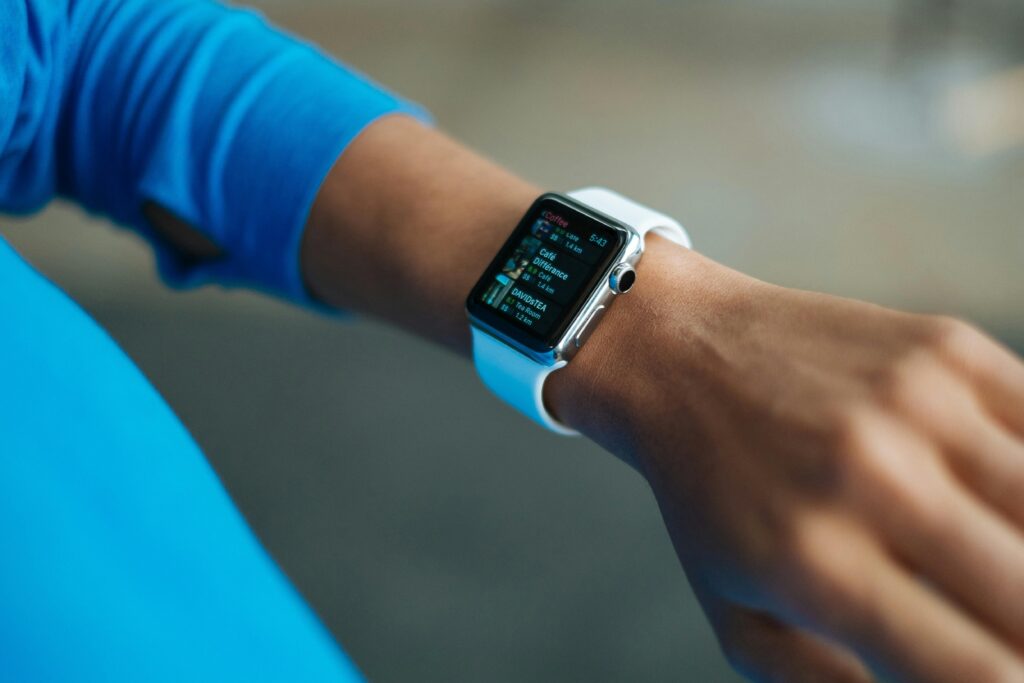Pairing MyFitnessPal with Apple Watch is a powerful way to manage your nutrition and physical activity in real-time. This integration allows users to gain better insights into their calories, workouts, and daily movement all from the wrist.
This article explains how to install and set up the apps correctly, configure data sharing with Apple Health, and take full advantage of the synced features. Whether you’re a fitness enthusiast, a personal trainer, or someone tracking health metrics for better lifestyle choices, this guide offers detailed, structured answers to help you get started and avoid common issues.

How to Install MyFitnessPal on Apple Watch
To begin using MyFitnessPal on Apple Watch, you must first install the mobile app on your iPhone. The Apple Watch app acts as a companion to the iOS app; it mirrors selected data and provides quick access to key features, but it cannot operate independently. Installation on the Watch becomes possible only after the iPhone version is installed and properly recognized by the system.
There are two methods to install the Watch app depending on your iPhone settings and how your Watch is configured. Understanding both methods ensures you can resolve common setup issues and access MyFitnessPal on your Watch without delay.
Automatic Installation via iPhone Settings
If you have automatic app installs enabled for Apple Watch, MyFitnessPal should appear automatically once the iOS app is installed and updated. This is the most seamless option and usually requires no additional steps.
- Open the Watch app on your iPhone.
- Go to “General” settings.
- Make sure “Automatic App Install” is turned on.
When this setting is active, any app on your iPhone that includes a compatible Watch version like MyFitnessPal will be installed on the Watch in the background. This process may take several minutes, especially if your device is syncing other apps or undergoing updates. It’s important to allow time for this synchronization before assuming installation has failed.
Keep in mind that even with automatic installation enabled, occasional delays can occur. For example, after updating the iPhone app, the Watch version might not appear immediately. This does not necessarily indicate a problem and often resolves without intervention.
Manual Installation from the Watch App
If automatic installation is disabled, or the app didn’t appear after setup, you can install MyFitnessPal manually using the Watch app on your iPhone.
- Open the Watch app on your iPhone.
- Scroll to the list of available apps.
- Find MyFitnessPal and tap “Install.”
Manual installation ensures greater control, especially for users who manage Watch storage or selectively choose which apps to display. After tapping “Install,” the process may take a few minutes depending on your connection and system load.
This method is particularly useful if you’ve previously uninstalled the app from the Watch or if you’re troubleshooting display issues after an update. Also, make sure your iPhone and Watch are properly paired and on the same Wi-Fi or Bluetooth connection for a smooth install.
Allow a few minutes for the installation to complete. In some cases, the Watch app may not appear immediately after updating MyFitnessPal on iPhone – this is normal and typically resolves on its own. However, if the delay persists, restarting both devices can prompt the sync and ensure visibility.
By following one of these two installation methods, you can ensure that MyFitnessPal is correctly deployed to your Apple Watch. Once installed, the Watch app provides quick access to calories, nutrients, and logging shortcuts all of which are tied to data managed through the iPhone version and integrated via Apple Health, which is discussed in the next section.

Setting Up Sync with Apple Health
Before MyFitnessPal can interpret and display data from your Apple Watch, it must be granted access to Apple Health, the central hub that collects and manages health-related information on iOS devices. Apple Health acts as the intermediary between the Watch and apps like MyFitnessPal, facilitating a secure, structured flow of data such as steps, workouts, weight entries, and nutritional summaries. Without this synchronization in place, MyFitnessPal will not be able to reflect your physical activity or health progress accurately.
Establishing sync involves a one-time permission process during the initial setup and ongoing access management through iOS settings. This ensures that only the data you approve is shared, and it also allows you to customize or troubleshoot syncing behavior as needed.
Initial Authorization
When you first attempt to integrate Apple Health with MyFitnessPal, the app should prompt you to authorize HealthKit access. This is a critical step in activating data exchange between the platforms and must be done carefully to avoid gaps in syncing.
- Open MyFitnessPal on your iPhone.
- Navigate to More > Settings > Sharing & Privacy > HealthKit Sharing.
- Select all categories (e.g., steps, weight, workouts).
- Tap “Allow” to confirm.
Granting access to all categories ensures that the app has full visibility into the metrics relevant to your fitness goals. Even if you don’t plan to use certain data types immediately (such as weight or sleep), enabling them allows for future flexibility without additional setup.
If the authorization screen doesn’t appear, it could mean permissions were already handled in the past or denied accidentally. In that case, the app may function with limited data access which could result in incomplete calorie adjustments or missing workout entries. It’s essential to verify and, if necessary, reset permissions manually.
Keep in mind that this HealthKit sharing process occurs within the MyFitnessPal app, but the underlying control belongs to the iOS Health system. This distinction becomes important when managing or correcting permissions later on.
Reviewing and Modifying Permissions
Even after the initial sync is complete, you may want to fine-tune which data is shared, especially if your fitness routine evolves or you begin using additional tracking devices. Fortunately, iOS allows you to revisit and change these settings at any time.
- Go to iPhone Settings > Health > Data Access & Devices.
- Select MyFitnessPal from the list.
- Review and adjust permissions as needed.
This section provides a detailed list of all health data categories that MyFitnessPal can read from or write to. You can enable or disable access to specific types of information such as steps, workouts, or nutrition depending on what you want the app to track or display.
It’s also important to clarify a common point of confusion: Apple Health will not appear under “Connected Apps” inside the MyFitnessPal interface. This is intentional and reflects how Apple structures app integrations. MyFitnessPal connects to HealthKit indirectly, relying on permissions granted through the iOS Health app, not through its own connection management panel.
For users unfamiliar with Apple Health’s backend architecture, this can seem like an omission or error but it is by design. Any troubleshooting or configuration involving syncing should always start from the iOS Health settings rather than inside the MyFitnessPal app itself.
Setting up this integration correctly is a foundational step that allows MyFitnessPal to pull accurate activity data from Apple Watch and provide reliable calorie adjustments, workout summaries, and long-term health insights as explored further in the next section.

What Data Syncs Between Apple Watch, Health, and MyFitnessPal
Once permissions are granted, data begins to sync between the Apple Watch, Apple Health, and MyFitnessPal. However, the direction and type of data shared are not uniform. Each data category follows specific rules of synchronization, and understanding these behaviors is essential for accurate health tracking and avoiding confusion about what is or isn’t working.
Steps and Activity
MyFitnessPal uses step data provided by Apple Watch through Apple Health to estimate calorie adjustments. These adjustments are calculated based on the difference between predicted activity levels and actual movement data received from the Health app.
- Step count is used to calculate calorie adjustments.
- Only steps and workouts passed through Apple Health are considered.
- Active Calories reported by Apple Watch are not directly read by MyFitnessPal.
This means that even though your Watch records Active Calories during workouts, those numbers are not imported directly into MyFitnessPal. Instead, the app uses steps and general movement data to determine whether to add or subtract calories from your daily goal. This often leads to apparent discrepancies between platforms, which is a result of MyFitnessPal’s internal calculation method, not a syncing error.
Workouts
Workout syncing between the platforms is directional and time-sensitive. MyFitnessPal can read workouts from Apple Health, but it does not write workout data back to Health.
- Only workouts performed and logged on the same calendar day are synced.
- MyFitnessPal does not send workouts to Apple Health – the data flow is one-way.
This limitation is particularly important for users who manually log workouts after midnight or backdate entries. In such cases, the data may not appear in MyFitnessPal even if the activity is visible in the Health app. For best results, it’s recommended to use workout apps that automatically log sessions in real time and push data to HealthKit immediately such as the native Workout app on Apple Watch.
Food Intake
MyFitnessPal syncs food entries to Apple Health, allowing other Health-compatible apps to access basic nutrition data.
- Only calories and nutrient data are shared.
- No meal timestamps are included.
This means that while Apple Health can display total calories, carbohydrates, protein, and fat consumed during the day, it does not distinguish between breakfast, lunch, or dinner. Time-of-day context is not transferred, which may limit integration with apps that rely on meal timing for analytics or fasting protocols.
In addition to macronutrients, MyFitnessPal may also sync selected micronutrients (such as sodium or sugar) depending on your logging detail and the Health permissions granted. However, the accuracy and availability of this data depend on your food database and the completeness of each entry.
Weight Data
Weight tracking is one of the few areas where MyFitnessPal and Apple Health offer two-way synchronization, providing flexibility in how users input their measurements.
- You can enter weight in either MyFitnessPal or Apple Health.
- Changes will reflect across both platforms.
This bi-directional sync is especially useful for those using smart scales that write data to Apple Health. Once your weight is recorded by the scale, it will automatically sync into MyFitnessPal, helping maintain a consistent record without manual duplication. Likewise, entries logged manually in MyFitnessPal will appear in Health.
Sleep Metrics
MyFitnessPal does not track or log sleep natively, but it can display sleep duration and quality metrics if they are synced into Apple Health from a third-party app.
Sleep information becomes visible inside MyFitnessPal only if imported into Apple Health first.
To view sleep data within MyFitnessPal, you must use a sleep tracking app that integrates with HealthKit such as the native Sleep app on Apple Watch or a third-party tool. Once the data is in Apple Health, MyFitnessPal can read and present it within your dashboard, contributing to a broader picture of wellness.

Features of the MyFitnessPal Apple Watch App
The MyFitnessPal Apple Watch app provides quick, glanceable access to essential health data and logging functions directly from your wrist. Designed with simplicity and speed in mind, it complements the main iOS app by offering streamlined features that support day-to-day habit tracking without the need to reach for your phone.
While it does not offer full-scale food diary editing or workout logging, it excels at keeping you informed of your progress and enabling small but important inputs during the day.
Viewing Health Metrics
The main interface of the Watch app focuses on core tracking data that reflects your real-time health and nutrition status. These at-a-glance metrics help users stay on track with their daily goals.
- Remaining calories based on your goal, logged intake, and activity adjustments.
- Macronutrients breakdown (carbohydrates, fats, proteins), helping manage dietary balance.
- Step count compared to your daily target, drawn from synced Apple Health data.
This data updates continuously throughout the day and reflects changes made in the iPhone app, including food entries, step data, and exercise syncing. For users who check their stats frequently such as during meal planning or walking breaks this interface provides meaningful insight with minimal effort.
Quick Actions
To support fast interaction, the app includes quick logging features that streamline routine tasks without navigating through menus or needing to open the full mobile app.
- Quick Add: Allows you to manually enter a specific number of calories when you don’t have time to log an entire meal. This is useful for approximated entries or when eating on the go.
- Water Intake: Lets you log your fluid consumption with a single tap, encouraging consistent hydration tracking throughout the day.
These features are designed for speed and convenience. They help reduce friction in the tracking process, especially in busy routines, and promote better long-term adherence to personal nutrition goals.
Complication Support
MyFitnessPal supports Watch face complications miniature data modules that display real-time information on the Watch home screen. These complications help you stay mindful of your progress without even opening the app.
Available complication types:
- Calories.
- Carbohydrates.
- Fat.
- Protein.
This flexibility allows you to customize your Watch face based on your primary focus. For example, athletes managing macronutrient ratios may choose to display protein, while individuals in a calorie deficit might prefer the calorie complication.
To add a complication:
- Open the Watch app on your iPhone.
- Go to the Watch Face settings and tap “Edit.”
- Choose a complication slot and select the MyFitnessPal metric you want to display.
Complications integrate seamlessly into most Watch face designs, making nutrition and fitness tracking a native part of your day. This subtle but constant visual reminder can increase self-awareness and support more consistent behavior, particularly when paired with calorie goals or macronutrient targets.
Common Issues and Troubleshooting
Despite seamless integration in most cases, several common issues may interfere with data syncing or lead to apparent inconsistencies between MyFitnessPal, Apple Health, and Apple Watch. These issues are usually tied to app permissions, time-sensitive data syncing, or misunderstandings of how certain metrics are calculated. Addressing these problems early ensures that your health data remains accurate, complete, and actionable.
Workouts Not Syncing
A frequently reported issue is that workouts recorded on Apple Watch do not appear in MyFitnessPal, even though they show up correctly in Apple Health. This can occur for several reasons, most of which are related to how and when the data is logged or shared.
- Ensure that permissions for workout data are enabled in HealthKit settings.
- Make sure the workout was logged on the same calendar day MyFitnessPal only syncs same-day activity.
- Try uninstalling and reinstalling the app after ensuring all recent data has been manually synced.
If workouts are logged after midnight, edited manually, or come from apps that don’t push data to Health in real time, they may be excluded from MyFitnessPal. Additionally, workouts logged in MyFitnessPal will not appear in Apple Health – the sync is one-directional for this data type. To maintain full consistency, it’s recommended to use Apple Watch or compatible HealthKit-enabled workout apps to record activity.
Reconnecting MyFitnessPal with Apple Health often helps resolve persistent sync delays. You can do this by revoking and reauthorizing permissions via the Health app settings, then restarting both the iPhone and the Watch to refresh the connection.
Calorie Data Doesn’t Match
It’s common for users to notice that total calorie numbers differ between Apple Watch, Apple Health, and MyFitnessPal. This is not a malfunction, but rather a result of how each platform handles activity and energy expenditure data.
MyFitnessPal does not read Active Calories directly from the Apple Watch. Instead, it calculates calorie adjustments based on step count and workout data imported through Apple Health. These adjustments represent the estimated difference between your projected activity level and your actual activity.
For example, if your baseline activity assumes a sedentary lifestyle and you walk 10,000 steps in a day, MyFitnessPal may apply a positive calorie adjustment. If no meaningful activity is recorded, no adjustment is made even if Apple Watch shows Active Calories burned during the day.
While this difference may seem like a discrepancy, it is expected behavior and stems from the app’s reliance on its own calorie estimation model. Users should focus on trends and consistency rather than expecting identical numbers across platforms.
If calorie data appears to be missing entirely, revisit HealthKit permissions and ensure that step and workout access is granted. It’s also useful to check whether you are using multiple devices or accounts, as these can fragment the data and cause misalignment between platforms.

Stress-Free Eating: Recipes, Plans, and Shopping Lists in One Place
Even when using trackers and wearable devices, the preparation and planning stage often takes the most time and energy. If you find yourself constantly searching for recipes, unsure of what to cook with what you have, or tired of creating grocery lists manually, you might benefit from a dedicated tool that simplifies this part of everyday eating.
ReciMe is an app designed to help you organize recipes, plan meals, and automatically generate grocery lists. It’s not a typical fitness app. Its purpose is different: to make daily food decisions easier and less time-consuming.
Here’s how ReciMe can help:
All Your Recipes in One Place
- Save recipes from Instagram, TikTok, Pinterest, YouTube, websites, and even from photos.
- Organize them by category: breakfast, dinner, snacks, etc.
- Use search and tags for quick access.
Why it matters: no more trying to remember where you saw that one recipe, everything is stored and easy to find.
Weekly Meal Planning
- Choose recipes and assign them to specific days.
- Customize your plan to match your schedule and preferences.
- Get a clear visual overview of your week.
Why it matters: a defined plan reduces last-minute decisions and helps you stick to the way you want to eat.
Automatic Grocery List
- ReciMe generates a list of ingredients based on your selected recipes.
- Items are grouped by grocery store sections (produce, dairy, grains, etc.).
- You can edit the list, remove what you already have, or add extras.
Why it matters: saves time during prep and shopping, with fewer forgotten or unnecessary items.
ReciMe brings order to the part of eating that usually happens behind the scenes, choosing meals, planning ahead, and managing your grocery needs. It’s especially useful if you’re already tracking your diet and activity but want the process of eating to feel simpler, not harder.
ReciMe is available on iOS and as a Google Chrome extension, making it easy to use across all your devices.
If you use tracking apps, ReciMe can be a practical addition that turns everyday food choices into a working system. Simple. Convenient. Clear.
Just try it – you’ll love it:


Conclusion
Integrating MyFitnessPal with Apple Watch offers a practical and efficient way to monitor nutrition, track physical activity, and stay accountable to wellness goals all from a single ecosystem. When properly configured through Apple Health, this setup enables reliable syncing of key metrics, real-time feedback, and simplified daily logging without interrupting your routine.
For professionals, clients, and organizations in the health and wellness sector, this integration supports greater accuracy, data-driven decision-making, and improved user engagement. Understanding the underlying data flow, especially how Apple Health acts as the central bridge is crucial for maximizing the system’s value. By combining mobile technology with structured tracking, users gain a more complete and actionable view of their health, making it a strong foundation for both personal progress and scalable wellness programs.
FAQ
How do I connect MyFitnessPal to my Apple Watch?
You cannot connect MyFitnessPal to Apple Watch directly in the way some other apps pair with the device. Instead, the integration relies on Apple Health, which serves as the data bridge between the two platforms. To enable syncing, install MyFitnessPal on your iPhone, grant it access to HealthKit, and ensure that your Apple Watch is actively sharing data with the Health app. Once this setup is complete, MyFitnessPal will automatically begin reading relevant metrics including steps, workouts, and weight from Apple Health, allowing for seamless data flow without the need for a separate pairing process.
Why don’t my Apple Watch workouts appear in MyFitnessPal?
Workouts from Apple Watch will only appear in MyFitnessPal if they are logged and synced on the same calendar day. MyFitnessPal does not import backdated or delayed workout entries, and it does not pull data from every third-party workout app. Additionally, if permissions are not correctly set in the Health app, the sync may fail entirely. Make sure that MyFitnessPal is allowed to access workout data in your Health settings. If syncing still does not occur, try disconnecting and reconnecting HealthKit permissions or reinstalling the app. These steps often resolve temporary data flow issues.
Does MyFitnessPal read Active Calories from Apple Watch?
No, MyFitnessPal does not read Active Calories directly from the Apple Watch. Instead, it estimates calorie adjustments based on step count and workout data that pass through Apple Health. This approach leads to differences between the calorie numbers shown in MyFitnessPal and those shown in the Activity or Fitness apps on your Apple Watch. This is not a syncing error but rather a design limitation based on how MyFitnessPal processes external activity data to calculate calorie balance.
Can I log food from Apple Watch?
You cannot log full meals or detailed food entries using the Apple Watch. However, the MyFitnessPal Watch app does allow for Quick Add, which lets you enter an approximate calorie value without accessing the full food database. You can also log water intake directly from your wrist. For detailed food tracking, including nutrient analysis and meal-specific entries, you need to use the iPhone version of the app.
Will weight entries sync between MyFitnessPal and Health?
Yes, weight entries sync in both directions between MyFitnessPal and Apple Health. This means that if you log your weight in either app, the other will reflect the updated data, provided that the correct permissions are enabled. This two-way syncing is particularly useful for users who rely on smart scales or track weight manually through HealthKit-compatible apps, as it avoids duplication and maintains consistent records across platforms.
What happens if I use two MyFitnessPal accounts on one phone?
Using more than one MyFitnessPal account on the same device is not recommended, as Apple Health cannot distinguish between them. Data such as steps, calories, and weight entries may become mixed, duplicated, or overwritten when switching accounts. This limitation can lead to inaccurate tracking and data conflicts. To ensure clean, reliable syncing, each MyFitnessPal account should be used on a separate device or within a dedicated user profile.
Can I use third-party apps for sleep tracking and still see data in MyFitnessPal?
Yes, MyFitnessPal can display sleep data as long as it is first written into Apple Health by a third-party app. The Watch itself or other sleep-tracking tools can log this information to HealthKit, and MyFitnessPal will read it from there. Keep in mind that MyFitnessPal does not track or record sleep directly, so ensuring correct permission settings for both apps within Apple Health is essential. Once set up, your sleep duration and trends will be visible within the MyFitnessPal dashboard.
